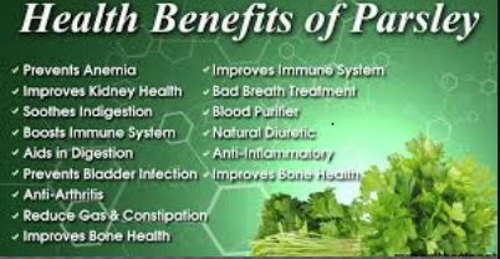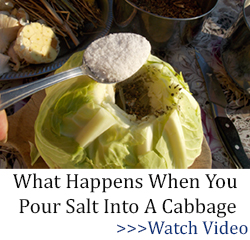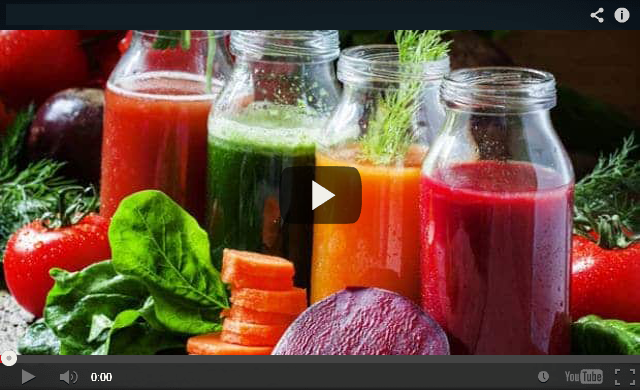You probably recognize parsley as a familiar fresh or dried herb, but you may not know that it can prove to be a boon to your health. Many cultures use it not only to add flavor to dishes, but also for the high nutrient value and the number of parsley benefits.
What are the health benefits of parsley? It’s packed with essential oils and antioxidants, to the point that it’s often called a superfood.
Parsley benefits the body in many ways and is considered a naturally effective treatment for a wide range of symptoms and diseases. This herb has long been considered an all-natural free radical scavenger, heart protector, brain protector, antidiabetic, antibacterial and digestive aid.
As a digestive soother, it’s probably best known for its ability to help regulate bowel movements and decrease bloating — but that’s not all.
What Is Parsley
Parsley, which has the scientific name petroselinum crispum, is a species of Petroselinum, a member of the family of Apiaceae plants. Other plants in the Apiaceae family include carrots, celery and other herbs, like cumin, dill and anise.
Countries and regions such as southern Italy, Algeria and Tunisia were some of the first growers of this healing herb.
The impressive health benefits of this herb come via its active ingredients, which studies show include:
phenolic compounds
antioxidant flavonoids
carotenoids
ascorbic acid
essential oils like myristicin and apiol
various nutrients like vitamins K, C and A
According to a 2013 report in the Journal of Traditional Chinese Medicine, parsley has been used as “a treatment of gastrointestinal disorder, hypertension, cardiac disease, urinary disease, diabetes and also various dermal diseases in traditional and folklore medicines.”
Types
There are two main types of parsley plants used as herbs in recipes:
Curly-leaf parsley, also called French parsley
Italian, or flat-leaf parsley
Flat-leaf Italian parsley is more closely related to the wild parsley species that was first grown in the Mediterranean. Compared to curly parsley, it also has a stronger flavor and is easier to grow.
However, some people prefer the curly-leaf variety because of its decorative appearance when it’s used on top of recipes. Both types taste very similar to someone who is not extremely familiar with them, and both offer similar health benefits.
Although it’s not seen very much in the U.S., there is another type of parsley: Hamburg root parsley, which looks similar to its relative the parsnip. This root vegetable plant is grown and used in parts of the world like the Middle East.
Root parsley is also used in some European cuisines, where it’s added to dishes like soups and stews, or eaten raw.
Parsley vs. Cilantro
These two green herbs have a similar appearance and even related health benefits, however parsley is usually described as having a more delicate flavor.
You can tell them apart by smelling them and looking for parsley’s pointed leaves.
Cilantro has more rounded and curved leaves. It also has a stronger smell that is similar to lime, while parsley is more subtle and almost bitter.
Cilantro is popular in Mexican, Thai and Indian-inspired dishes, while parsley has uses in various cuisines. Both provide antioxidants.
For example, cilantro has beta-carotene, beta-cryptoxanthin, lutein and zeaxanthin, which help account for the many cilantro benefits.
Parsley Benefits
Although more formal research is needed, there’s some evidence that parsley uses and benefits may include helping fight the following symptoms and disorders:
Inflammation
Oxidative stress/free radical damage
Anemia
Bladder infection
Digestive problems, including irritable bowel syndrome
Kidney stones
Bad breath
Arthritis
Bloating/edema
Gas
Acid reflux
Constipation
Poor immunity
Skin problems
Certain types of cancer
High Source of Flavonoid Antioxidants
What is parsley good for in terms of anti-aging and immune-boosting benefits?
It contains a range of protective vitamins and flavonoid antioxidants that are responsible for many of the disease-fighting parsley benefits being researched today. These antioxidants include luteolin, apigenin, lycopene, beta-carotene and alpha-carotene.
Antioxidants help slow the aging process by fighting free radical damage, or oxidative stress, along with inflammation within the body. This is important because free radical formation is known to contribute to almost every age-related disease, including cancer, heart disease, neurodegenerative diseases and eye disorders.
When adults were given high quantities of the herb, they showed a significant improvement in lowering oxidative stress levels compared to those who didn’t receive it, according to a study done by the Danish Veterinary and Food Administration’s Institute of Food Safety and Toxicology in Copenhagen, Denmark. During the study participants were initially given a diet that didn’t contain sources of antioxidants.
The researchers noticed that when the subjects were on the restricted diet, their oxidative stress markers rose, but when parsley was added to their diets during the second half of the study, it was found to help reverse the signs of oxidative stress thanks to its status as a high-antioxidant food.
Provides Beneficial Essential Oils that Fight Cancer
Parsley contains unique elements in its oil known as volatile oil components — myristicin, limonene, eugenol and alpha-thujene. These powerful oil components benefit the body’s immune system and help fight cancer formation, in particular by slowing tumor growth, neutralizing oxidative stress and fighting off carcinogens, according to research studies.
This herb is sometimes called a “chemoprotective” plant because it helps protect DNA from damage, stops cell mutation and helps induce apoptosis, or the death of harmful cells.
One of this herb’s beneficial compounds, called apigenin, has been found to “inhibit progestin-dependent synthesis of human breast cancer cells, significantly delaying the development of, and decreasing the incidence and multiplicity of mammary tumors,” according to research done in 2013 by the American Association of Cancer.
Acts as Natural Diuretic and Helps Relieve Bloating
Strong evidence exists that parsley can be used as a natural diuretic to help relieve water retention and ease bloating, according to a 2002 review done at the American University of Beirut.
In the study, rats given parsley seed extract showed a significant increase in the volume of urine they produced over the 24 hours following.
Parsley benefits digestive health because it helps stimulate kidney production of urine and draws excess water out of the abdomen, where it can cause discomfort and indigestion.
Improves Digestion and Kidney Health
Parsley and its essential oil are used to treat a number of gastrointestinal symptoms and disorders, including gas, constipation, bloating, indigestion and nausea.
According to Ayurveda practices, parsley benefits digestion because the essential oil can help increase bile production and beneficial gastric juices that are needed for proper enzyme functions involved in food and nutrient absorption. The essential oil can be added to a bath or diluted and rubbed on the stomach area for relief.
Why is parsley good for the kidneys? According to studies, parsley benefits for the kidneys include potentially lowering your risk of kidney stones and helping regulate the body’s pH level by reducing acidity.
A 2017 study concluded that “parsley acts as antiurolithiatic drug through decreasing urinary calcium excretion, increasing urinary pH, dieresis, decreasing urinary protein excretion and via its nephroprtective activity.”
Has Antibacterial and Antifungal Properties
Parsley benefits skin and dental health by fighting off infections and bacteria. Its essential oils are believed to be effective at eliminating fungus — plus it clears up bacteria-caused blemishes on the skin.
The parsley oil held within the plant’s leaves, roots and seeds is considered antimicrobial. It’s used in soaps, detergents, perfumes and other hygiene products for its ability to kill bacteria and odors.
Parsley oil is very strong and can cause a skin reaction or topical burn. As such, do not apply it directly to the skin.
Instead mix it with a carrier oil like coconut, olive or almond oil, and then apply to the skin in order to avoid any reactions.
Helps Reduce Bad Breath
Another one of the many parsley benefits is that it’s a great way for how to get rid of bad breath. It is a natural breath freshener because it kills the bacteria in the mouth that cause odors.
Good Source of Bone-Protecting Vitamin K
Parsley provides high levels of vitamin K, an essential nutrient for maintaining bone density, fighting bone breaks and fractures. As a vitamin K food, this nutrient works together with the other bone-building nutrients in the herb — calcium, phosphorus, vitamin D and magnesium.
Contains Immune-Boosting Vitamin C
Parsley benefits your immune defenses due to its high levels of antioxidants, including vitamin C and vitamin A. Vitamin C helps maintain a healthy gut environment, where much of the immune system is actually located.
Helps Protect Eye and Skin Health by Providing Vitamin A
Parsley benefits for eyes are due to its high content of two antioxidants — pro-vitamin A carotenoid and beta-carotene — that are used by the body to boost eye health. These antioxidants protect the retina and cornea from damage as someone ages, helping prevent eye disorders like macular degeneration and cataracts.
Vitamin A also fights signs of aging on the skin, protects eyes and skin from UV light damage, and may be able to help prevent skin cancer.
Provides Folate Needed for Heart Health
Because it’s a vital B vitamin that plays a critical role in protecting your heart, folate deficiency is very dangerous. Parsley benefits cardiovascular health because we need folate in order to convert homocysteine, a type of amino acid found in the blood.
Homocysteine is a potentially troublesome molecule that can cause damage to blood vessels when uncontrolled, potentially leading to a heart attack or stroke.
Helps Balance Hormones
Parsley seeds have traditionally been used as an important spice in Asian countries and in India for normalizing menstruation, treating amenorrhea (loss of menstrual cycle) and decreasing menstrual pain. It’s believed to help balance hormones — important for fertility and preventing symptoms of PMS.
Another one of the parsley benefits? Since it helps prevent neural tube defects that can result when a folate deficiency takes place, the folate within this herb is also important for a healthy pregnancy.
Nutrition Facts
One cup (about 60 grams) of fresh, raw parsley nutrition contains approximately:
21.6 calories
3.8 grams carbohydrates
1.8 grams protein
0.5 grams fat
2 grams fiber
984 micrograms vitamin K (1,230 percent DV)
79.8 milligrams vitamin C (133 percent DV)
5,055 international units vitamin A (101 percent DV)
91.2 micrograms folate (23 percent DV)
3.7 milligrams iron (21 percent DV)
332 milligrams potassium (9 percent DV)
82.8 milligrams calcium (8 percent DV)
30 milligrams magnesium (7 percent DV)
0.1 milligrams manganese (5 percent DV)
In addition, this herb also contains some vitamin E, thiamine, riboflavin, niacin, vitamin B6, pantothenic acid, choline, phosphorus, zinc and copper.
How to Cook and Add to Diet
What does parsley taste like? It adds a fresh, almost peppery taste to many recipes, and it’s especially popular in European and Middle Eastern cuisines.
Can parsley be eaten raw? Yes, you can eat both fresh and dried parsley.
Uses include adding flavor and nutrients to soups, stews, pasta dishes, spreads, marinades, dips or added to salads and smoothies. Foods that it pairs well with include:
potatoes
rice
fish
chicken
lamb
goose
grass-fed beef
almost every type of vegetable
Here are some of its popular uses spanning the globe:
In Europe, parts of the Middle East and in western Asia, many dishes are served with fresh chopped parsley sprinkled on top.
Others dishes are made using larger quantities of chopped, blended or cooked parsley, such as tabbouleh, a traditional Middle Eastern side dish that uses this herb as one of the main ingredients along with bulgur wheat and vegetables.
In France, it’s used in persillade, a mixture of chopped garlic and chopped parsley.
In Italy, this herb appears in salsa verde, a mix of parsley, capers, anchovies, garlic and vinegar. In England, it’s blended into a roux-based sauce that is commonly served over fish.
In Brazil, this herb goes into cheiro-verde, a key seasoning for major Brazilian dishes. Meanwhile, across Europe, it stars in gremolata, a mixture of parsley, garlic and lemon zest.
How to Buy
Parsley can be grown in cooler climates, or in subtropical warmer climates, but it does best when planted in moist soil that gets a lot of sunshine. You can normally find it year-round, as it’s cultivated in many different areas of the world with varied climates and tends to grow in large quantities pretty easily.
In the U.S., this herb is usually available in spring and summer months at your local farmers market.
Look for parsley that is bright green and doesn’t have noticeable wilting or brown spots.
How much parsley should you eat per day? Up to one or two cups daily provides many benefits, but most people won’t be able to consume this much.
Aim for several tablespoons of fresh parsley per day, which still provides a decent dose of many nutrients.
Chopping and Storing
Regarding how to chop parsley, rinse it well, gather it into a bunch and then use a large knife to chop it on a cutting board finely. You can also use a food processor to make things easier.
You can store parsley for usually up to one week. Prolong its freshness by first drying it and then wrapping it in a damp paper towel and putting it inside of a plastic bag in your refrigerator.
It’s better not to wash it until you are going to use it. This way it doesn’t wilt and go bad quickly.
Once you’re ready to use it, give it a good wash or add it to a bowl of cold water and swish it around for a minute to get any dirt off.
Parsley Recipes
Parsley Tea (uses 2 to 4 tablespoons of fresh parsley with 2 cups of water). This tea has been used in natural folk medicine as a remedy for treating gallstones, indigestion, kidney stones, constipation and edema (bloating). Drinking ginger and parsley tea is also a great way to soothe nausea associated with pregnancy, stomach viruses, etc.
Parsley Juice. Benefits of parsley juice may include supporting detoxification by supplying nutrients for the kidneys and liver. In animal studies, the juice even seems to support brain health and behavior by positively impacting neurotransmitters levels and protecting neurons from oxidative stress.
Turkey with Herbs (parsley, sage, rosemary and thyme)
Baked Parsley Potatoes
Almond-Crusted Salmon Recipe
Garden Frittata Recipe
Mango-Walnut Spinach Salad Recipe
If you need a parsley substitute, try using cilantro, chervil, basil or even celery leaves. Remember you can also keep dried parsley on hand, which lasts for years.
Risks and Side Effects
How much parsley is too much? This herb contains a small amount of naturally occurring oxalates, which can sometimes be a problem for people with kidney stones or gout.
Oxalates are found in certain plant and animal foods and usually don’t pose a problem for most people, but for people who have compromised kidney or gallbladder function, they may want to be cautious if they notice any symptoms worsen while consuming parsley.
What happens when you eat too much parsley? You’d have to consume at least several cup’s worth to have a negative effect, however you might notice increased urination or a stomach ache if you eat it in excess.
Excessive consumption should also be avoided by pregnant women since it naturally has an effect on hormone levels and the menstrual cycle. It’s considered safe in normal food quantities, but large amounts or using the essential oil have not been studied enough in pregnant women to be considered safe.
Final Thoughts
What makes parsley nutrition so impressive? It’s full of antioxidants, essential oils and vitamins, like vitamin C, A and K.
Parsley benefits include acting as a free radical scavenger, heart protector, brain protector, antidiabetic agent, antibacterial and digestive aid.
This herb is eaten fresh or dried and commonly used to make tea and juice. Parsley tea benefits include soothing the digestive system and decreasing stomach aches, while parsley juice supports the kidneys and liver in detoxification processes.
Parsley vs. cilantro: What’s the main differences? Both are nutrient-dense and look alike, but cilantro has a stronger smell and taste (resembling lime) and is used in Indian and Mexican cooking more often.
The Lost Book of Remedies is the revolutionary e-book which is suitable for one of the tools in survival kit because the creator of this program was mentioned lots of benefits about natural medicinal herbs and ingredients to make you feel safe, secure by protecting the health of yourself and dependents in any crisis. Even you can plant it in your backyard to grow effective medicinal herbs to save the life of anyone without wasting your money and time. This e-book will guide you on the right path to provide security, water, food, and all the medicines for securing your life or loved ones at all the time. This guide discussed the common plants that are grown in your backyard, but you don’t know the benefits of that plan which may help you to overcome any significant issues. Sometimes it may replace your antibiotic pills, reduce inflammations, stops bleeding, reverse arthritis, lowers cholesterol, regulates blood sugar level, defeats degenerative brain diseases and much more.
Books can be your best pre-collapse investment.
Carnivore’s Bible (is a wellknown meat processor providing custom meat processing services locally andacross the state of Montana and more. Whether your needs are for domestic meator wild game meat processing)
The Lost Book of Remedies PDF ( contains a series of medicinal andherbal recipes to make home made remedies from medicinal plants and herbs.Chromic diseases and maladies can be overcome by taking the remediesoutlined in this book. The writer claims that his grandfather was taughtherbalism and healing whilst in active service during world war twoand that he has treated many soldiers with his home made cures. )
Easy Cellar(Info about building and managing your root cellar, plus printable plans. The book on building and using root cellars – The Complete Root Cellar Book.)
The Lost Ways (Learn the long forgotten secrets that helped our forefathers survive famines,wars,economic crisis and anything else life threw at them)
LOST WAYS 2 ( Wordof the day: Prepare! And do it the old fashion way, like our fore-fathers did it and succeed longbefore us,because what lies ahead of us will require all the help we can get. Watch this video and learn the 3 skills that ensured our ancestors survival in hard times offamine and war.)






